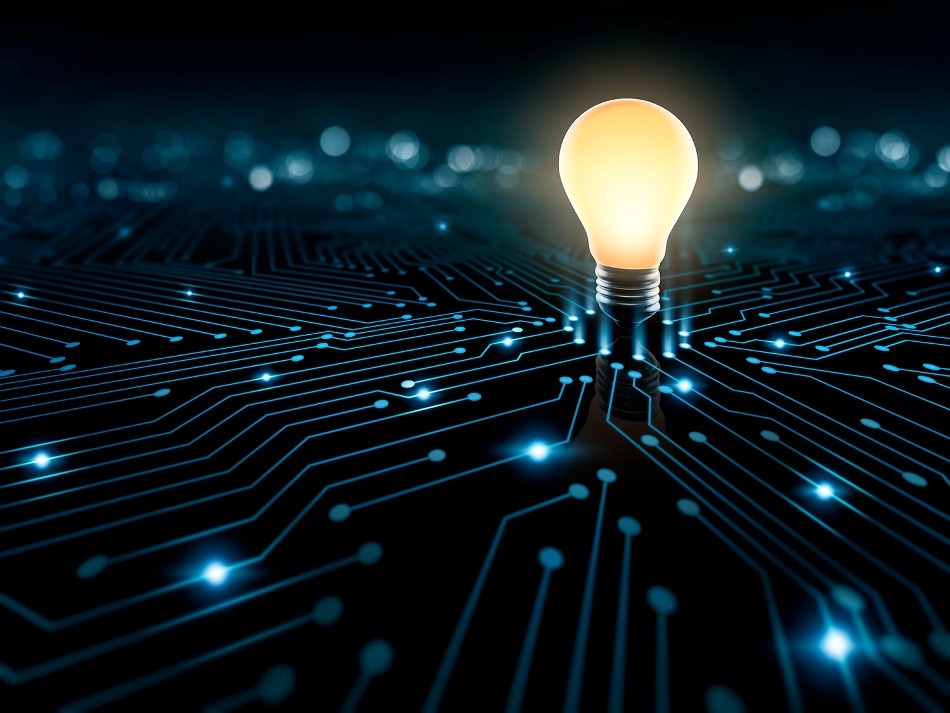Jul 25 2019
In the coming days, faster and more efficient data processing may come down to light instead of electricity.
 Stanford researchers are developing a nanoscale photon diode that could contribute to technologies that run on light rather than electricity. (Image credit: Getty Images)
Stanford researchers are developing a nanoscale photon diode that could contribute to technologies that run on light rather than electricity. (Image credit: Getty Images)
Mark Lawrence, a postdoctoral scholar in materials science and engineering at Stanford University, has developed a strategy to make a new photon diode that brings him one step closer to this future
Photon diode is a device that enables light to flow only in one direction—which, unlike other kinds of light-based diodes, is sufficiently small for use in consumer electronics.
All Lawrence had to do was to develop smaller-than-microscopic structures and break an underlying symmetry of physics.
Diodes are ubiquitous in modern electronics, from LEDs (light-emitting diodes) to solar cells (essentially LEDs run in reverse) to integrated circuits for computing and communications. Achieving compact, efficient photonic diodes is paramount to enabling next-generation computing, communication and even energy conversion technologies.
Jennifer Dionne, Study Senior Author and Associate Professor, Materials Science and Engineering, Stanford University
Dionne has described the results of the study in Nature Communications on July 24th, 2019.
At this stage, Lawrence and Dionne have created the novel photon diode and tested their design using computer calculations and simulations. The team has also developed the required nanostructures—the customized smaller-than-microscopic components—and are deploying the light source that they believe will bring their conceptualized system to life.
“One grand vision is to have an all-optical computer where electricity is replaced completely by light and photons drive all information processing,” Lawrence stated. “The increased speed and bandwidth of light would enable faster solutions to some of the hardest scientific, mathematical and economic problems.”
Spinning Light, Breaking Laws
There are two major challenges of a light-based diode. The first challenge is that light obeying the laws of thermodynamics should be able to move forward via an object without any moving parts in the same precise way it would move backward. New materials are needed to make the light flow in one direction. However, that will overturn the laws of thermodynamics and break the so-called time-reversal symmetry.
The second challenge is that it is rather difficult to manipulate light than electricity because the former lacks charge.
In the past, other scientists have addressed these difficulties by running light via a polarizer—which causes the light waves to oscillate in an even uniform direction—and subsequently via a crystalline material inside a magnetic field, which rotates the light polarization. Finally, another polarizer corresponding to that polarization guides the light out with near-perfect transmission. No light comes out if it is run through the device in the reverse direction.
According to Lawrence, the one-way action of this three-part setup, called a Faraday isolator can be compared to taking a moving sidewalk between a pair of doors, where the sidewalk serves the role of the magnetic field. Even if individuals attempt to go backward via the last door, the sidewalk would typically restrict them from reaching the first door.
To generate a powerful rotation of the light polarization, such kinds of diodes have to be quite large—that is, large enough to be accommodated into smartphones and consumer computers. As a substitute, Lawrence and Dionne created a technique to produce rotation in a crystal using another beam of light rather than a magnetic field.
This is a polarized light beam so that its electrical field assumes a spiral motion which, consecutively, creates rotating acoustic vibrations in the crystal giving it magnetic-like spinning abilities and allowing more light to escape.
To render the structure both efficient and small, the Dionne laboratory depended on its expertise in exploiting and amplifying light with very small nano-antennas as well as nanostructured materials known as metasurfaces.
Arrays of ultra-thin silicon disks were also designed by the researchers and these precuts operate in pairs to capture the light and improve its spiraling movement until it spots its way out.This leads to high transmission in the forward direction.
When the acoustic vibrations are illuminated in the backward direction, they spin in the reverse direction and help nullify any light attempting to get out. From a theoretical standpoint, this system can be as small as possible.For their simulations, the researchers envisioned structures as thin as 250 nm. (For reference, a sheet of paper has a thickness of about 100,000 nm)
What’s Possible
The scientists are specifically interested in how their concepts would have an impact on the development of brain-like computers, known as neuromorphic computers. This objective will also need more developments in other light-based components, like nanoscale switches and light sources.
“Our nanophotonic devices may allow us to mimic how neurons compute—giving computing the same high interconnectivity and energy efficiency of the brain, but with much faster computing speeds,” Dionne stated.
We can take these ideas in so many directions. We haven’t found the limits of classical or quantum optical computing and optical information processing. Someday we could have an all-optical chip that does everything electronics do and more.
Mark Lawrence, Postdoctoral Scholar, Materials Science and Engineering, Stanford University
Dionne is also a member of the Wu Tsai Neurosciences Institute at Stanford University and a member of Stanford Bio-X, an affiliate of the Precourt Institute for Energy.
The Air Force Office of Scientific Research, the National Science Foundation, and the Alfred P. Sloan Foundation funded the study.